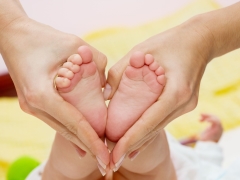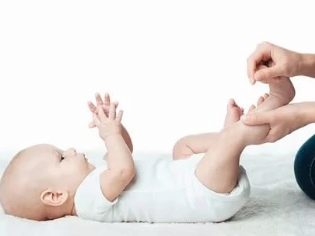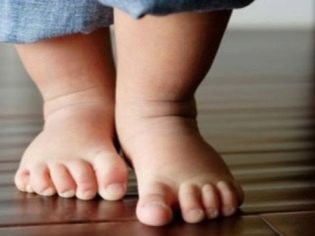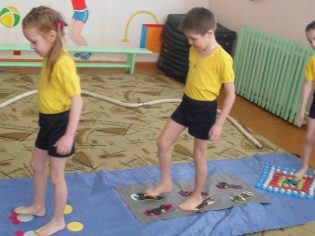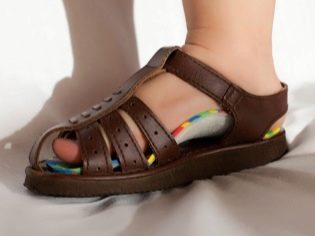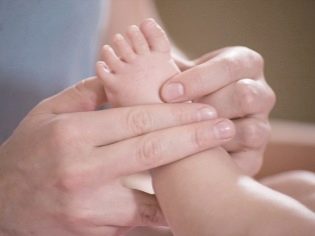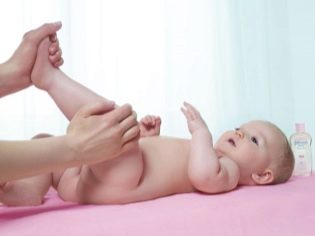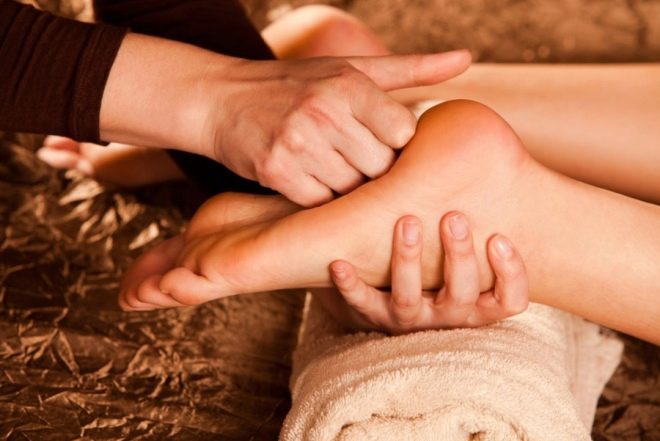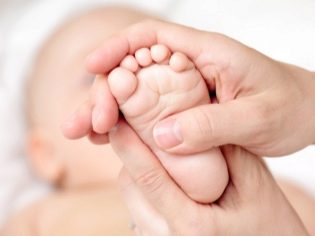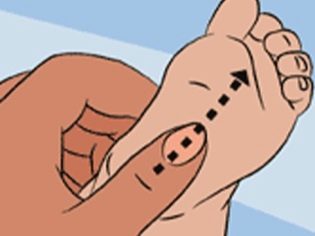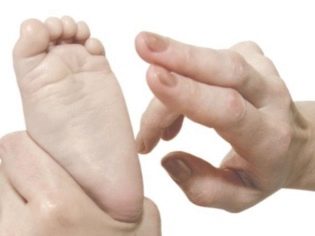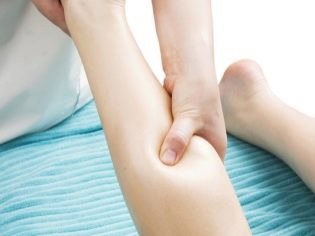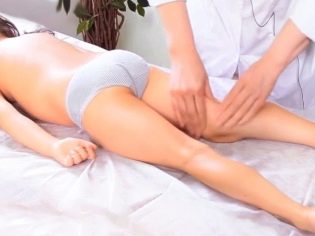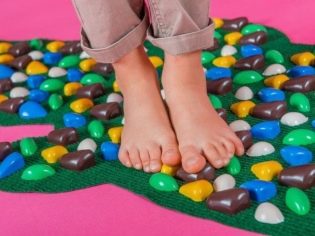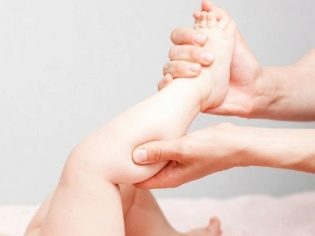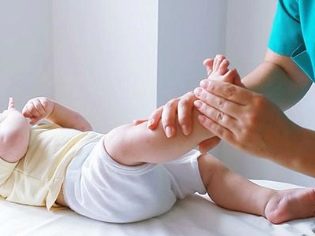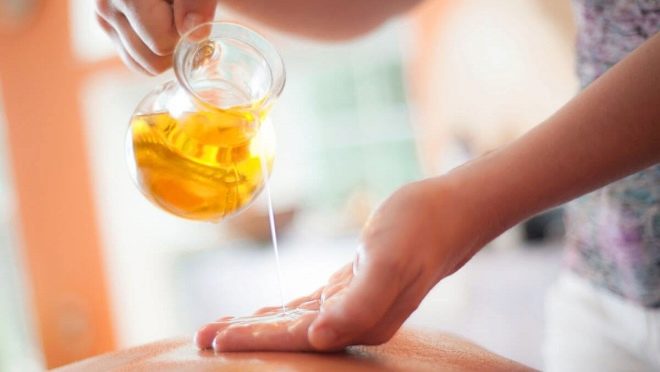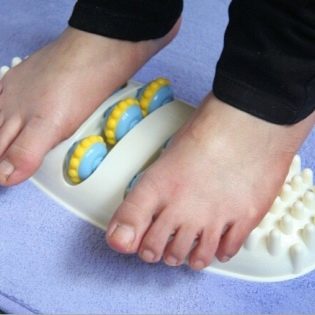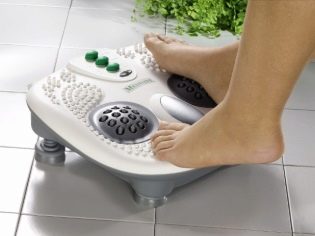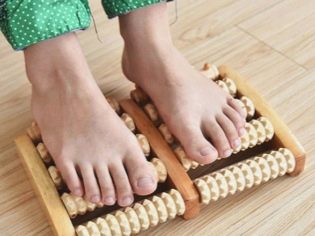Massage for flat feet in children
Most cases of pediatric flatfoot can be corrected conservatively, without surgery. To do this, the child is prescribed a comprehensive treatment, which includes gymnastics and physical therapy, wearing orthopedic shoes or orthopedic insoles, as well as massage and self-massage of the feet. How to make the child a massage during the deformation of the feet, we will discuss in this article.
Why do you need it
Massage with flat feet allows to improve the blood circulation of the lower extremities, relieve the load from some muscle groups and transfer it to others, strengthens the tendons and helps to form the correct position of the arch of the feet and metatarsal stones.
This is very important in the correction of pathology. Professional therapeutic massage is expensive, and not all families can afford such courses, and with flat feet, they are long. However, do not despair, because the technique of performing such a massage is not complicated; it is quite within parents’s power to master it independently, in order to conduct sessions with comfort at home without extra costs.
It is important to remember that massage should be done regularly. Better - courses for 14 days with breaks of 7-10 days.
The effect will be more pronounced if the massage sessions will be combined with other methods of treatment of flatfoot - wearing orthopedic insoles or special therapeutic shoe pairs, as well as physiotherapy sessions, gymnastics and correction of the child's nutrition.
Massage technique
In the massage should include techniques aimed at stimulating the muscles of the foot, lower leg, knee joint, thighs, buttocks. It is best to start the massage from the bottom and move up smoothly.
When carrying out massage manipulations on the lower extremities, it is important to remember that all movements of an adult should be directed upwards, and not vice versa, in order not to disturb the natural blood flow in the legs.
Foot
The heel is “supplied” with thick and insensitive skin nature, and therefore intensive deep pressure can be applied in the heel area, much arching of the feet and fingers should be done more carefully, because the deep pressing movements in this part of the legs can be quite painful.
Do not assume that a good massage should be painful. During the session, the child should not be uncomfortable or painful. Complaints of the child to the pain - a signal to the masseur to change the degree of pressure on the muscle tissue and tendons.
To massage the feet, you will need two small pillows or two towels rolled up with rollers. One is enclosed under the foot, and the other under the knee joint. The child is lying on his back or sitting, stretching his legs.
- Reception 1. Rub your foot gently on the sides with clean and dry hands. Try to keep your hand movements in sync.
- Reception 2. One hand clenched into a fist rests on the foot, the second palm presses the fist down as closely as possible to the foot. This is how intense deep rubbing of the foot occurs from the toes to the heel and back. With the passage of the area of the foot should be somewhat lower pressure, so as not to deliver the pain.
- Reception 3. The thumbs of the massage therapist should be on the back of the foot, and the rest on the sole. They rub their thumbs from the bottom up, and then begin to rub each finger, starting with the big one and ending with the little finger.
- Reception 4. And the back side of the foot, and the sole should be rubbed in a circular motion in a clockwise direction.
- Reception 5. The heel is in the spotlight.First, intensively rubbing it with your thumbs, and then in a circle you begin to pinch the space around the heel.
- Reception 6. Use index and middle fingers from the metatarsal to the ankle, stopping at the ankle and making light circular movements around it.
- Reception 7. Soft vibration tapping "walk" along the entire sole - from the fingers to the ankle.
At this foot massage can be considered complete. The total duration of this stage is no more than 20 minutes. It's time to go higher.
Ankle and Shin
It is important to perform all the tricks carefully, especially the child has a tendency to cramps. Start with a light stroke of the ankle, and then the lower leg side up.
- Reception 1. With your thumbs, rub the sides of the shin intensively with circular movements from the bottom up.
- Reception 2. Use your thumb and forefinger to pinch your lower leg muscles.
- Reception 3. Rub the front part of the lower leg with the edges of your palms.
The stage ends with soft vibrating tapping on the ankle and lower leg, stroking, which should completely relax the muscles. The duration of this stage is no more than 7-10 minutes.
Knee joint, thigh
With the knee should be extremely careful. The task of this massage stage is to redistribute the load, relieve tension from the ligaments of the knee and the thigh muscles.
- Reception 1. Massage the knee joint with light circular movements in a clockwise direction, smoothly swiping with the index and middle finger around the patella.
- Reception 2. In circular motions, easily rub the sides of the knee joint — internal and external.
- Reception 3. Massage the thigh more intensely - with deep kneading.
End the stage with soft vibrating tapping, stroking the anterior thigh muscles. The duration of the stage is no more than 5-10 minutes.
After that, the child changes the position of the body to the horizontal on the stomach. Pillows or rolls of towels are placed under the foot and under the knee. Once again massage the feet (as described), paying special attention to the Achilles tendon.
Massaging the shin, but not from the side, but from the back, and the thigh. The massage is completed with kneading and vibrating tapping in the buttock area.
Complete the massage preferably with a contrast foot bath. First, immerse the baby’s feet in a basin with warm water and gradually pour cold water into it until the liquid in the pelvis cools down completely. After that, intensively rub the feet and legs with a hard towel for the feet.
After that, you can begin to acupressure with a massage pad.
A mat for a child with flat feet should be more rigid than a preventive mat, with a more pronounced relief or needle-like base.
It can perform a set of exercises in a standing position and in motion - walking on the toes, on the heels, on the side surfaces of the foot.
In addition to improving blood circulation, during such “walks” barefoot on an uneven surface, active points are massaged, which are very numerous on the human foot.
Thus, the massage pad-applicator is not only a correction for flat feet, but also a general recovery of the child’s body, intense impact on the work of the internal organs, as well as the nervous system.
After gymnastics and acupressure, it makes sense to hold a five-minute short final massage of the feet and lower leg, the purpose of which is to relax all muscle groups. This short exposure should contain soft, neat strokes, without intense deep exposure.
Useful tips
- You should not massage for children under 3 years. The exceptions are cases of congenital anomalies of the structure of the feet, but in this case, the massage technique may differ from the one described above, it is recommended individually, taking into account the degree of deformation nature.
- The best results of massage in combination with other methods of conservative treatment gives a longitudinal flatfoot. The cross is harder to manual correction.
- For massage, you can use massage oil or baby cream. It is better to do the first warming movements with dry hands, but emollients and moisturizers will be very useful when conducting deeper receptions.
- Massage can be performed not only for treatment, but also for the prevention of flatfoot in children and adolescents. Conducting preventive massage, reduce the time of each stage of the session by half. For prevention, you should not do a massage more than 1-2 times a week.
- When a child experiences pain, the session should be interrupted and returned to him only after the child is ready and calm. For children of younger age it is reasonable to turn the mandatory procedure into a fun game.
Foot massagers
Massagers for children's feet, there are a variety of - from a rather primitive mechanical to electronic devices, which is enough to immerse the foot and set the desired mode. Much depends on family income and how much they are willing to spend on the purchase of such a device.
It should be noted right away that simulators, even expensive and “smart” ones, cannot replace manual massage, since they do not take into account the structural features of the foot, the shape and degree of deviation of the anatomy of the child’s legs from the norm.
But the simulator can be a good help, especially for the treatment of adolescents. In addition to manual massage, the child will be able to use it, for example, while watching a movie or reading a book.
Contraindications
Massage with flat feet should not be performed if the child currently has injuries or damage to the skin of the lower extremities. Massage sessions are contraindicated for children with:
- high fever;
- purulent inflammation in any part of the body;
- with tuberculosis or cancer;
- with dermatological manifestations of allergy.
How to do a massage with flat feet, see the following video.
